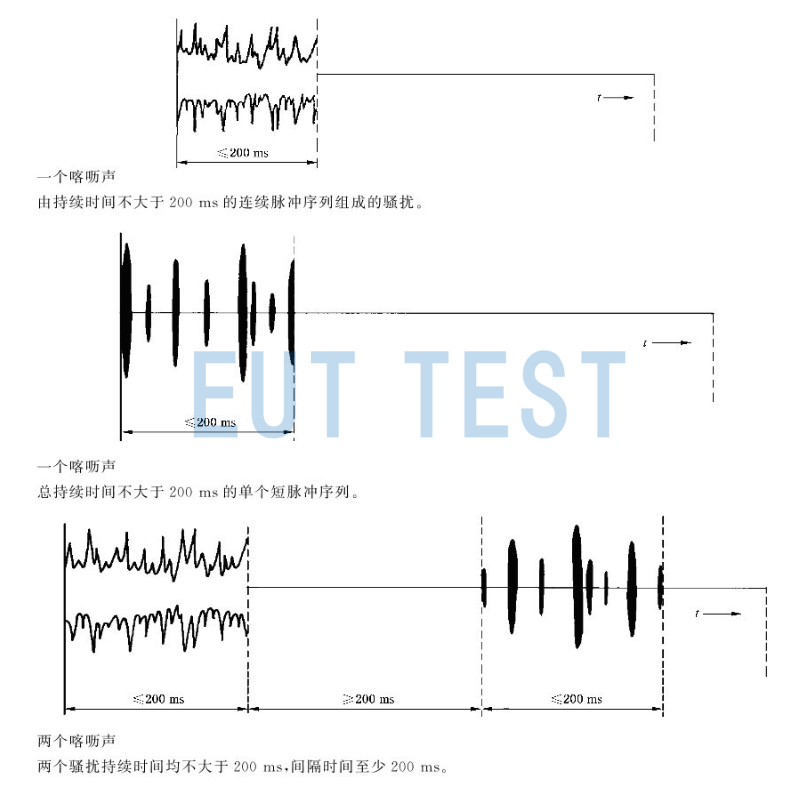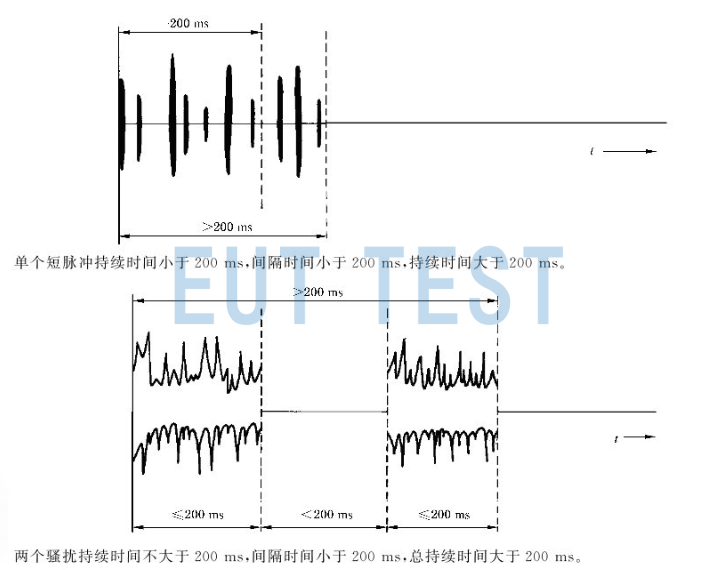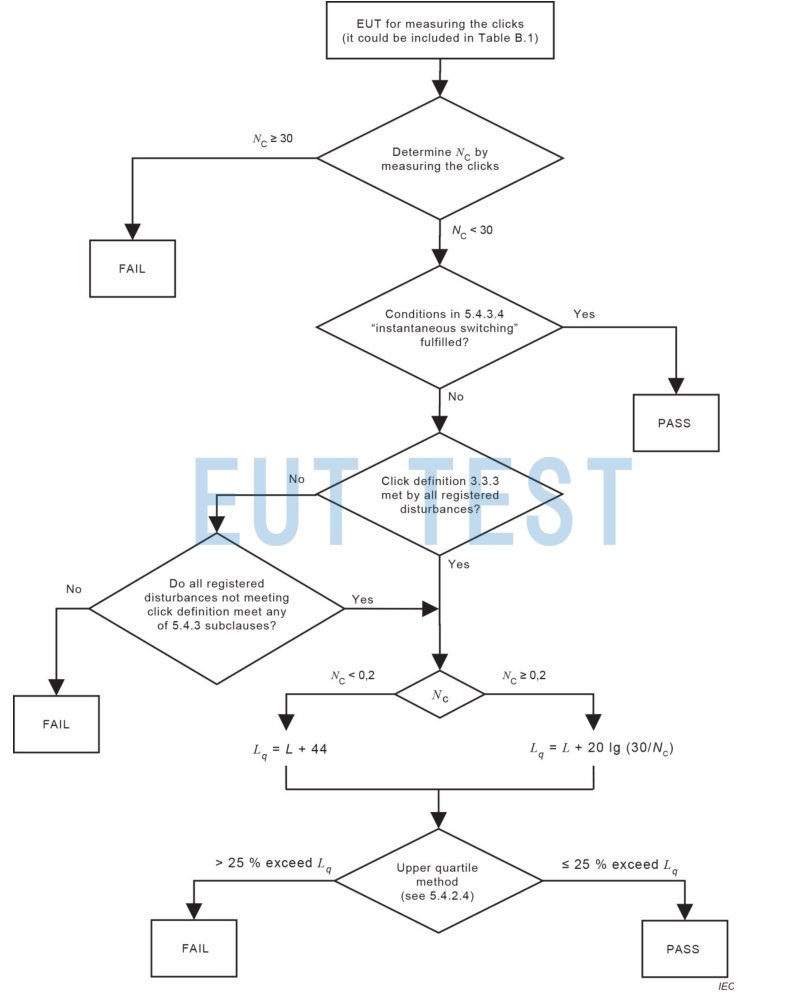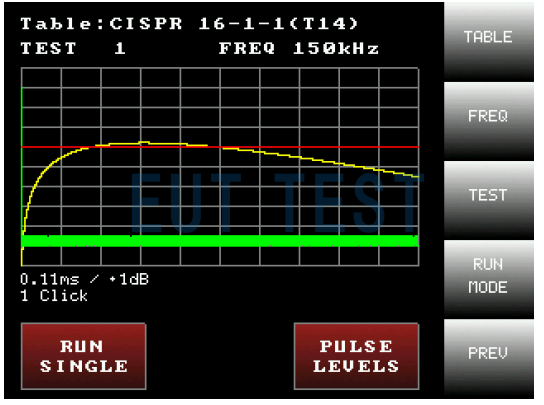Introduction:
This paper details the definitions and test methods for discontinuous disturbance and click, which is a type of discontinuous disturbance, and explains what counts as click, and what equipment does not need to be tested for click. Finally, a test method for click is given.
Discontinuous disturbance:
Intermittent nuisance differs from continuous nuisance in that it is an impulse nuisance caused by a sudden and brief increase in nuisance level due to switching operations.
Note 1: The spectral density of intermittent harassment is broadband. Its subjective effect varies with repetition rate, duration and amplitude. These parameters are captured by suitable time-domain instruments (e.g., crackle analyzers).
Note 2: Other pulse nuisances exhibit broadband (e.g., pulses generated by commutation of brushed motors), but with higher repetition rates than typical switching operations.
click
click test is an discontinuous disturbance whose amplitude exceeds the continuous nuisance quasi-peak limit for a duration of not more than 200 ms and which is at least 200 ms from the preceding or succeeding nuisance.The duration is determined by a signal exceeding the measured receiver IF reference level or by an instantaneous peak signal exceeding the continuous nuisance quasi-peak limit.
A waveform that meets the definition of a click:

Determining if it's a click from the duration and intervals
A click may contain one or more pulses.
Waveforms that do not meet the definition of a click:
Below are some examples of waveforms whose durations or intervals do not meet the definition of a click:

Waveforms that do not meet the definition of a click
Under certain conditions, certain disturbance are considered to be click even if they do not meet this definition.
Intermittent nuisance can be ruled out for the device:
Intermittent disturbances at the power supply ports shall be evaluated using the intermittent disturbance limit values, while intermittent disturbances need not be measured in the case of products with general exclusions and in the case of products with exceptions:
General exclusions:
- If the construction, electrical characteristics and intended use of the equipment indicate that a certain measurement is not required, the equipment is considered to comply with the relevant requirements without testing. The test report shall include engineering judgment in support of these test exclusions. NOTE: For example, equipment that does not contain sources of RFI (e.g. commutator motors and active electronic circuits, see 3.9.2) or equipment whose emission characteristics do not require the performance of a particular test (e.g. equipment that is not considered to be a significant source of magnetic fields).
- It is not necessary to measure frequencies for which there are no specified limits.
Examples of excluded devices.
(b) Switching of resistive loads at grid voltage zero to produce intermittent disturbances not exceeding the conducted continuity limit.
Smooth control of inductive loads with frequency converters or variable speed drives (VSD).
Automatically stops and does not produce any click during a complete program; for this type of equipment, it is not worthwhile to continue testing because it does not produce a click.
Exceptions:
- Single switch operation
- Nuisance combinations with time frames less than 600ms
- momentary switch
- Harassment at intervals of less than 200ms
- Thermostatically controlled three-phase switch
- Superimposed on a continuous harassing click
How to Measure discontinuous disturbance click
Discontinuous disturbance click should be used at four frequencies: 150 kHz, 500 kHz, 1.4 MHz and 30 MHz.Click AnalyzerConducting test evaluations.
The input attenuation of the clicker receiver should be set so that the input signal with amplitude equal to the limit L of continuous disturbance in thereceiverThe dynamic range of the
If the evaluation of the clicks is to be done in one round of measurements, the input signal with an amplitude equal to the continuous nuisance limit L and the upper-quartile limit Lq shall be within the dynamic range of the receiver.
The rate of clicks is then measured during the minimum observation time and, using the upper quartile method, the number of clicks above Lq at each frequency is compared with the total number of clicks counted at the same frequency.
The flowchart for measuring discontinuous disturbance click is shown below

Flowchart for discontinuous disturbance click
References:
GB 4343.1 2024 Electromagnetic compatibility Requirements for household appliances, power tools and similar apparatus Part 1: Emissions
CISPR 14-1 2020 Electromagnetic compatibility Requirements for household appliances, power tools and similar apparatus Part 1: Emissions


